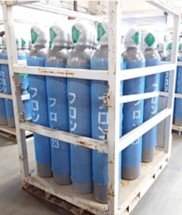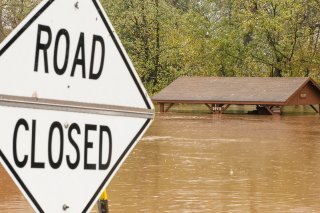Enforcement and Compliance Assurance Annual Results for FY 2024: Climate Change
Taking steps to limit climate change and develop climate resilience are critical to the Environmental Protection Agency’s mission of protecting human health and the environment. EPA’s enforcement and compliance assurance program is focused on addressing this 21st century environmental challenge and our efforts are a critical component of the whole-of-government approach to combatting climate change.
While climate change is a global problem, the impacts of climate change disproportionately affect communities already overburdened by pollution. These communities have fewer resources to adapt and recover from climate change. To protect such communities, it is imperative that we consider climate justice as we factor climate change considerations into our enforcement and compliance assurance activities.
In FY 2024, EPA continued its focus on addressing climate change through implementation of EPA’s Climate Enforcement and Compliance Strategy (pdf) and the first-ever Mitigating Climate Change National Enforcement and Compliance Initiative (NECI), which focuses on two climate super pollutants: methane and hydrofluorocarbons or HFCs.
EPA continued to build capacity through training, guidance, and associated resources to enable enforcement and compliance assurance staff to incorporate climate change considerations into all aspects of their work. EPA focused on cases that would limit greenhouse gas emissions that contribute to climate change and incorporated climate resilience into our settlement agreements with violators, whenever appropriate.
Additionally, to raise awareness and ensure compliance with environmental laws, EPA issued three enforcement alerts in FY 2024. These alerts inform stakeholders and the public about EPA enforcement activity related to combatting climate change:
- EPA Targeting Illegal Imports of Hydrofluorocarbon Super-Pollutants to Combat Climate Change
- EPA Finds MSW Landfills are Violating Monitoring and Maintenance Requirements
- EPA Finds MSW Landfills are Violating Landfill Gas Emission Rate Calculation Requirements
Through these and other efforts, EPA continues to take actions to reduce greenhouse gas emissions and increase resilience to future impacts from climate change because our efforts today will determine what kind of world we leave for future generations.
Mitigating Climate Change NECI
EPA’s enforcement and compliance assurance program is heeding the urgent call to address climate change with a sharpened focus on climate super pollutants. In FY 2024, we used EPA’s criminal and civil enforcement authorities to address three separate and significant contributors to climate change under our Mitigating Climate Change NECI:

- Methane emissions from oil and gas facilities;
- Methane emissions from landfills; and
- Use, importation, and production of HFCs.
EPA’s focus on inspections at oil and gas facilities and landfills across the country has resulted in numerous enforcement actions with record-breaking results.
In July 2024, EPA reached a record-breaking settlement with Marathon Oil Company for Clean Air Act violations at nearly 90 oil and natural gas production facilities located on the Fort Berthold Indian Reservation in North Dakota. Marathon agreed to pay a $64.5 million civil penalty, the largest Clean Air Act stationary source penalty to date, and to invest $177 million toward compliance measures. The compliance measure investments will result in the reduction of nearly 2.25 million tons of carbon dioxide equivalent methane emissions over five years, which is equivalent to taking 487,000 cars off the road for one year. In addition, these actions will significantly reduce harmful health-related emissions from 169 existing facilities on state land and on the Fort Berthold Indian Reservation, as well as at new facilities built in North Dakota. Read more: Marathon Oil Clean Air Act Settlement Summary.
Additionally, in January 2024, EPA reached a settlement with Allied Waste for Clean Air Act violations at its Niagara Falls landfill. The settlement will result in an estimated 86,000 metric tons of carbon dioxide equivalent methane emission reductions. The gas collection and control system that Allied will operate will also prevent 32 metric tons of non-methane landfill gas emissions per year. Exposure to these hazardous air pollutants, which can include benzene, toluene, ethyl benzene, and vinyl chloride, can lead to adverse health effects. Read more: Allied Waste CAA Violations Settlement press release.
American Innovation and Manufacturing Act

EPA’s enforcement program continued to implement the American Innovation and Manufacturing (AIM) Act requiring EPA to phase down the production and consumption of HFCs by 85% by 2036. The agency is vigorously enforcing the AIM Act utilizing all civil and criminal enforcement tools to prevent the illegal import, production, sale, or distribution of HFCs.
In March 2024, EPA reached a settlement with Resonac America Inc., to address the company’s illegal import of HFCs into the United States. Under the settlement, Resonac paid a civil penalty and will safely destroy 1,693 pounds of HFCs. Read more: Resonac Settlement for Import of HFCs press release.
Operation: Disrupt HFCs
In FY 2024, EPA announced Operation: Disrupt HFCs, a joint operation between the EPA’s Office of Criminal Enforcement Forensics and Training, U.S. Customs and Border Protection, Homeland Security Investigations, and the Department of Justice to enforce the AIM Act by disrupting the illegal importation of HFCs into the United States. The operation evaluated and detained 3,369 HFCs cylinders, visited 21 ports of entry, trained over 800 enforcement personnel across the federal government, and has resulted in 28 criminal cases opened and seven defendants charged.
National Consistency Reporting Process
FY 2024 was the first full year that EPA’s enforcement and compliance assurance program used a nationally consistent reporting process to track significant greenhouse gas, or GHG, emission reductions achieved through enforcement actions. As a result of these actions, EPA’s enforcement and compliance assurance program can estimate that more than 5.9 billion pounds of carbon dioxide equivalents in GHGs were reduced, treated, or eliminated. EPA’s ability to demonstrate the important role enforcement actions play in battling climate change in a nationally consistent way will be essential for tracking the agency’s enforcement and compliance assurance program's contribution to addressing climate change and tracking overall emissions of GHGs.
Climate Adaptation and Resiliency
EPA continues to build on the foundational work in the 2022 Office of Enforcement and Compliance Assurance Climate Adaptation Implementation Plan (pdf) , announced in October 2022, which outlines specific priority actions EPA’s enforcement and compliance assurance program will take to integrate climate adaptation and resilience into all enforcement cases and compliance activities.
EPA factors the changing climate into its enforcement and compliance assurance activities to ensure that regulated entities and communities strengthen their adaptive capacity, consider climate change risk in their planning, and increase their resilience so that they are better able to anticipate, prepare for, withstand, and recover from the disruptive impacts of climate change, while also remaining in compliance with environmental laws.

Policy documents are a critical tool to help ensure EPA staff and our state and local partners understand when and how to appropriately include and address climate change considerations in enforcement and compliance assurance work. On June 12, 2024, EPA issued the Addressing Climate Vulnerabilities in Water Enforcement Remedies memorandum to ensure that remedies in Clean Water Act and Safe Drinking Water Act enforcement actions are resilient in the face of climate impacts. This policy document builds on the efforts of states, local communities, and industry and adopts common sense measures for protecting people, the environment, and economic investments from the impacts of a changing climate, with the goal of assuring long-term compliance with the nation's clean water and safe drinking water laws.
For more information about how EPA’s enforcement and compliance assurance programs are helping to address the climate crisis, visit EPA’s Addressing Climate Change in Enforcement and Compliance webpage.
